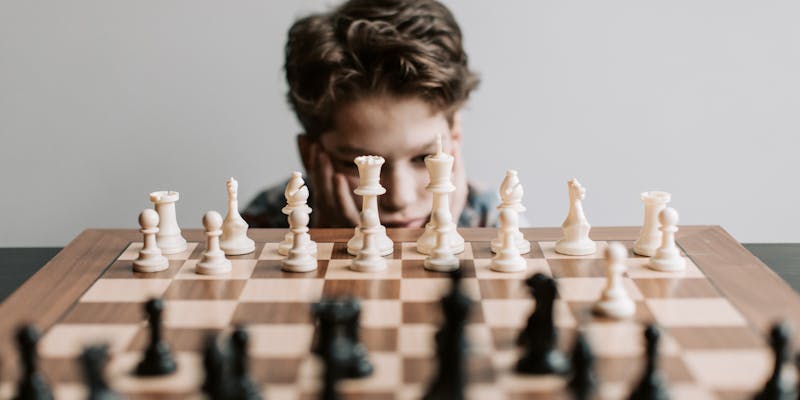
Unlocking Potential: Nurturing Multiple Intelligences in Children for Lifelong Success
Welcome to our blog post dedicated to exploring the fascinating world of multiple intelligences in children and how nurturing these unique strengths can pave the way for lifelong success. In this article, we will delve into the theory of multiple intelligences, proposed by Howard Gardner, and shed light on the diverse ways in which children can be intelligent beyond traditional measures.
We will discuss practical strategies that parents and educators can implement to support various intelligences both at home and in school, emphasizing the importance of embracing diversity and fostering a growth mindset. By understanding and nurturing different intelligences in children, we aim to provide valuable insight into unlocking their full potential and cultivating a path toward success that celebrates individuality and unique strengths. Join us on this enlightening journey as we explore how embracing multiple intelligences can empower children to thrive in all aspects of their lives

Understanding the Theory of Multiple Intelligences
The Theory of Multiple Intelligences, proposed by psychologist Howard Gardner in 1983, fundamentally transformed how we perceive intelligence. Gardner believed that traditional measures of intelligence, such as IQ tests, were too limited and did not encompass the full range of abilities individuals possess. According to Gardner's theory, there are eight different types of intelligences, each representing a unique way in which individuals perceive and understand the world.
When it comes to nurturing multiple intelligences in children, it is crucial to recognize that each child has a distinct set of strengths and capabilities. By understanding and embracing the diversity of intelligences, parents and educators can provide a more holistic and tailored approach to education. Instead of focusing solely on linguistic and logical-mathematical abilities, which are traditionally emphasized in schools, parents and educators can also nurture bodily-kinesthetic, musical, spatial, interpersonal, intrapersonal, naturalistic, and existential intelligences.
For example, a child who excels in music may benefit from additional music lessons or opportunities to incorporate music into other areas of learning. Similarly, a child with a strong naturalistic intelligence may thrive in outdoor activities or gardening projects. By tapping into and developing these diverse intelligences, children can build confidence, motivation, and a deeper understanding of themselves and the world around them.
Moreover, nurturing multiple intelligences in children from a young age can set the stage for lifelong success. As children grow and develop, they can leverage their unique intelligences to excel in various domains, whether it be in academics, arts, sports, or interpersonal relationships. By fostering a supportive environment that values and cultivates all forms of intelligence, parents and educators can empower children to reach their full potential and lead fulfilling lives

Identifying and Nurturing Different Intelligences in Children
Understanding that children possess a range of intelligences beyond traditional academic skills is crucial for their holistic development. Howard Gardner's theory of Multiple Intelligences proposes that individuals have unique strengths in different areas such as musical-rhythmic, visual-spatial, verbal-linguistic, logical-mathematical, bodily-kinesthetic, interpersonal, intrapersonal, and naturalistic intelligence.
Each child is a blend of these intelligences, with varying degrees of proficiency in different areas. By identifying and nurturing these varied intelligences, parents and educators can help children flourish in all aspects of their lives. For instance, a child who excels in visual-spatial intelligence may show talent in art or design, while another child strong in interpersonal intelligence may be a natural leader among their peers.
Recognizing and supporting these different intelligences not only boosts children's confidence and self-esteem but also helps them excel in school and beyond. By providing diverse learning experiences that cater to a range of intelligences, parents and educators can help children discover their strengths and interests, paving the way for lifelong success.
Encouraging activities that align with a child's dominant intelligences can foster a sense of fulfillment and accomplishment. Whether it's through music, sports, puzzles, or nature exploration, providing opportunities for children to explore and develop their intelligences can unlock their full potential and set them on a path to a successful and fulfilling future.
In conclusion, nurturing multiple intelligences in children is essential for their overall growth and success. By acknowledging and capitalizing on their unique strengths, parents and educators can help children thrive in various aspects of their lives, laying a solid foundation for a bright and promising future

Practical Strategies to Support Multiple Intelligences at Home and School
When it comes to nurturing multiple intelligences in children for lifelong success, it is crucial to recognize and understand the various ways in which children learn and excel. Multiple Intelligences theory, developed by psychologist Howard Gardner, proposes that individuals possess a range of different types of intelligence, including linguistic, logical-mathematical, spatial, bodily-kinesthetic, musical, interpersonal, intrapersonal, and naturalistic intelligences. By acknowledging and fostering these diverse forms of intelligence, parents and educators can help children reach their full potential.
To support multiple intelligences at home and school, it is essential to provide varied and stimulating learning opportunities that cater to different strengths and preferences. For children with linguistic intelligence, reading books, engaging in storytelling, and participating in discussions can be beneficial. Those with logical-mathematical intelligence may thrive in activities that involve problem-solving, critical thinking, and numerical reasoning.
Children with spatial intelligence may enjoy visual arts, puzzles, and spatial reasoning games, while those with bodily-kinesthetic intelligence excel in hands-on activities, sports, and physical exercises. Musical intelligence can be nurtured through exposure to music, singing, playing instruments, and rhythmic activities. Interpersonal intelligence involves relating well to others, working collaboratively, and understanding different perspectives, which can be developed through group projects, teamwork, and social interactions.
Intrapersonal intelligence focuses on self-awareness, reflection, and emotional intelligence and can be supported through activities that promote self-expression, self-discovery, and mindfulness practices. Lastly, naturalistic intelligence involves an appreciation for nature, animals, and the environment, and can be nurtured through outdoor experiences, gardening, and environmental education.
By incorporating a variety of activities and teaching strategies that cater to these different types of intelligence, parents and educators can create a rich and engaging learning environment that supports the holistic development of children. Encouraging children to explore their strengths, interests, and passions across multiple intelligences can help foster a love for learning, boost self-confidence, and pave the way for lifelong success

Fostering a Growth Mindset Through Multiple Intelligences
Nurturing multiple intelligences in children is crucial for their overall development and long-term success. By recognizing and fostering various forms of intelligence beyond traditional academic skills, parents and educators can unlock the full potential of young learners. Howard Gardner's theory of multiple intelligences highlights the diverse ways in which individuals can demonstrate intelligence beyond the confines of IQ tests or standardized assessments.
Encouraging children to explore and develop their unique strengths across different intelligences — such as linguistic, logical-mathematical, spatial, bodily-kinesthetic, musical, interpersonal, intrapersonal, and naturalistic intelligences — can help them cultivate a growth mindset. This growth mindset emphasizes the belief that abilities can be developed through dedication and hard work, rather than being fixed traits.
By providing children with opportunities to engage in activities that align with their individual intelligences, parents and educators can nurture their self-confidence, creativity, and problem-solving skills. For example, a child with a strong musical intelligence may benefit from music lessons or joining a choir, while a child with a naturalistic intelligence may thrive through outdoor exploration and gardening projects.
Through a holistic approach to education that values all forms of intelligence, children can discover their passion, gain a deeper understanding of themselves, and build essential life skills that will serve them well into adulthood. Embracing the concept of multiple intelligences not only fosters a growth mindset but also instills in children the belief that success comes in many different forms. By celebrating diversity in intelligence and providing tailored support to cultivate individual strengths, we can help children flourish and reach their full potential in all areas of life

Cultivating Lifelong Success by Embracing Diversity of Intelligences
Children are naturally diverse in their abilities and strengths. Howard Gardner's theory of Multiple Intelligences suggests that intelligence is not a singular entity but a blend of different types of intelligences that individuals possess in varying degrees. By recognizing and nurturing these multiple intelligences in children from a young age, we can lay the foundation for their lifelong success.
When we talk about embracing the diversity of intelligences in children, we mean acknowledging and valuing all the ways in which a child can be intelligent. This goes beyond the traditional measures of intelligence, such as academic achievement or IQ scores, and includes other forms of intelligence like spatial, kinesthetic, musical, interpersonal, and intrapersonal intelligences, among others.
Each child is unique, with their own set of strengths and preferences when it comes to learning and problem-solving. By understanding and catering to these diverse intelligences, we create an environment that allows children to thrive and reach their full potential. For example, a child who excels in musical intelligence may benefit from learning through songs or incorporating music into their study routines. Similarly, a child with strong interpersonal skills may thrive in group projects and collaborative activities.
By nurturing multiple intelligences in children, we not only help them excel academically but also help them develop essential life skills such as creativity, critical thinking, emotional intelligence, and resilience. This holistic approach to education ensures that children are well-rounded individuals capable of adapting to an ever-changing world.
In conclusion, by embracing the diversity of intelligences in children and providing them with opportunities to develop their strengths, we can cultivate lifelong success. It is through this recognition and nurturing of multiple intelligences that we unlock the full potential of each child and empower them to succeed in all aspects of their lives